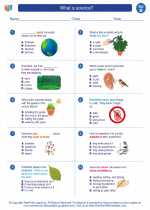Chloroplasts
Chloroplasts are a type of organelle found in plant cells. They are responsible for the process of photosynthesis, which is the conversion of light energy into chemical energy in the form of glucose.
Structure of Chloroplasts
Chloroplasts have a double membrane structure, with an inner and outer membrane. Inside the chloroplast, there is a fluid-filled space called the stroma, where the light-independent reactions of photosynthesis occur. Within the stroma are thylakoid membranes, which contain chlorophyll, the pigment that captures light energy for photosynthesis.
Function of Chloroplasts
The main function of chloroplasts is to carry out photosynthesis. During this process, light energy is absorbed by chlorophyll in the thylakoid membranes, and this energy is used to convert carbon dioxide and water into glucose and oxygen. The glucose is then used as a source of energy for the plant, while the oxygen is released as a byproduct.
Chloroplasts and Energy Production
Chloroplasts play a crucial role in the production of energy for plant cells. Through photosynthesis, they convert light energy from the sun into chemical energy stored in glucose, which is then used by the plant for growth, reproduction, and other metabolic processes.
Study Guide
- What is the main function of chloroplasts?
- Describe the structure of a chloroplast.
- What is the pigment responsible for capturing light energy in chloroplasts?
- Explain the process of photosynthesis and the role of chloroplasts in this process.
- How does the energy produced by chloroplasts benefit plant cells?
◂Science Worksheets and Study Guides Second Grade. What is science?

 Worksheet/Answer key
Worksheet/Answer key
 Worksheet/Answer key
Worksheet/Answer key
 Worksheet/Answer key
Worksheet/Answer key
 Vocabulary/Answer key
Vocabulary/Answer key
